by Alan D. Northcutt, Waco Friends of Peace
Like most Wacoans, I used to purchase bottled water periodically. But then I learned the truth about this product:
- In the U.S. tap water is safe and is subject to more stringent federal regulations and inspections than bottled water.
- About half of bottled water brands are simply municipal tap water, but cost up to 1000 times the price of tap water.
- At a time when droughts are widespread, 3 liters of water are required to produce 1 liter of bottled water.
- The production and transportation of one bottle of water requires energy equivalent to the oil of a one quarter filled bottle. This process added 2.5 million tons of CO2 to the atmosphere in 2006.
- 75% of water bottle plastic ends up in landfills, lakes, streams and oceans, and requires centuries to decompose.
- The planet’s oceans are contaminated by five gigantic circulating patches of plastics and microplastics, the largest covering 500,000 square miles.
- Because animals mistake plastic for food, annually an estimated 1 million seabirds and 100,000 marine mammals die from plastic, and 2/3 of our fish stocks ingest plastic.
Since I became aware of these facts I have never purchased bottled water. We can all easily take steps to conserve precious natural resources while protecting the biosphere and its inhabitants by drinking water in reusable metal or reusable BPA-free plastic containers. I believe bottled water should be reserved for natural disasters and other emergency situations only.
 This week’s blog is by Alan D. Northcutt. Alan has lived in Waco for 28 years. He is a physician specializing in skin pathology. He has been active in the anti-war movement since college days, and heads the Waco Friends of Peace. Alan believes the most important issue facing mankind is climate change, which has become the primary focus of Friends of Peace. If you would be interested in writing for the Act Locally Waco blog, please contact Ashley Thornton by email at [email protected].
This week’s blog is by Alan D. Northcutt. Alan has lived in Waco for 28 years. He is a physician specializing in skin pathology. He has been active in the anti-war movement since college days, and heads the Waco Friends of Peace. Alan believes the most important issue facing mankind is climate change, which has become the primary focus of Friends of Peace. If you would be interested in writing for the Act Locally Waco blog, please contact Ashley Thornton by email at [email protected].
By Kelsey Scherer, Child Hunger Outreach Specialist
Since we know that Waco children and families struggle with hunger throughout the school year, we also know that hunger – like any other complex issue inextricably linked to poverty – doesn’t take a summer vacation. That’s why programs like the Summer Food Service Program, which we know locally as free Summer Meals for Kids, are critically important in our community. Waco ISD’s Child Nutrition Services has served free Summer Meals for over twenty years in partnership with school campuses, local churches, and nonprofit organizations, but this year, they’re doing things a little bit differently.
For the first time ever, Waco ISD’s Child Nutrition Services will be launching a new mobile meal program called “Meals on the Bus!” The program will address the longstanding barrier of inadequate access to transportation that has, for many years, been cited as a top reason that children are unable to visit summer meals sites and receive a nutritious meal. By bringing the meals directly to groups of kids at select locations, parents and advocates won’t have to worry about children crossing busy streets or traveling far from home in order to have access to a free lunch.
Two Waco ISD buses have been retrofitted with the collaboration of Waco ISD and STS, and will be fully equipped to serve hot meals to up to 40 children at a time. Children will line up and receive their meals inside the bus, where they will be able to sit in the bus seats and enjoy their meal safely and in the comfort of an air-conditioned space. Targeted stops will include apartment complexes and areas with high densities of children who could benefit from the meal. The site list will be announced soon, but several great partners, including the Waco Public Library System, are on board. Like any traditional Summer Meals site, this program provides limitless potential for partnership with churches, community organizations, state agencies, and others, who have the desire and flexibility to provide summer programming and enrichment to children on-site. Waco ISD will also operate many traditional, non-mobile sites throughout the summer, as always.
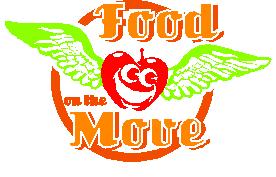 This summer, you will also see Waco’s newest child nutrition program sponsor, CitySquare, launching their mobile Food on the Move program in Waco and beyond! The fact that this summer, Waco will be graced with the presence of not one, but two, food sponsors trying out new meal service models speaks to the willingness of groups to collaborate and coordinate services on behalf of Waco children and families. It also reflects the strength of growing efforts to innovate and come up with creative, strategic solutions to challenges within this space. CitySquare has done an excellent job of coordinating dinner meal service to over 900 children daily at participating afterschool programs in Waco since January 2014.
This summer, you will also see Waco’s newest child nutrition program sponsor, CitySquare, launching their mobile Food on the Move program in Waco and beyond! The fact that this summer, Waco will be graced with the presence of not one, but two, food sponsors trying out new meal service models speaks to the willingness of groups to collaborate and coordinate services on behalf of Waco children and families. It also reflects the strength of growing efforts to innovate and come up with creative, strategic solutions to challenges within this space. CitySquare has done an excellent job of coordinating dinner meal service to over 900 children daily at participating afterschool programs in Waco since January 2014.
Both of these programs have been in the planning stages for several years, but additional energy, fresh resolve, and technical assistance were brought to the table when the CHAMPS grant, sponsored by National League of Cities (NLC) and Food Research and Action Center (FRAC) and funded by the Walmart Foundation, was awarded to the City of Waco’s Parks and Recreation Department. The specific goal of this grant is to increase the number of children who participate in the federally-funded Summer and Afterschool Meals programs, and we have already seen those numbers increase through afterschool meals as a result of the work of this team (of which I am, of course, a totally unbiased member). I am thrilled that our city is being proactive in launching a new model for meal service that has potential to positively impact the wellbeing of children, teens, and families. I am encouraged that we have already seen similar programs be enormously effective in other Texas communities, and I look forward to helping these leaders try out this model in our own community, tailoring it to the specific needs and desires of our neighbors. I can’t wait to see all that will come of these unique partnerships, and see new partnerships and collaborations formed around these great programs.
Keep your eyes peeled for Waco ISD’s “Meals on the Bus!” and CitySquare’s “Food on the Move” serving free Summer Meals to kids and teens ages 18 and under in early June, and an advertising campaign beginning soon. If you want to get involved by supporting a Waco ISD or CitySquare site through volunteers and activities for kids, or helping spread the word, please contact Kelsey Scherer at [email protected] or 254-300-7801.
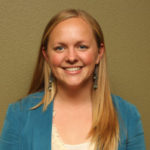 Kelsey Scherer blogs for Act Locally Waco about Food Security and related issues. She is a Child Hunger Outreach Specialist at Texas Hunger Initiative’s Waco Regional Office. Kelsey is also a team member for the CHAMPS grant. The CHAMPS project aims to equip city leaders, anti-hunger groups, and the broader community to more effectively combat child hunger with the help of summer and afterschool meal programs.
Kelsey Scherer blogs for Act Locally Waco about Food Security and related issues. She is a Child Hunger Outreach Specialist at Texas Hunger Initiative’s Waco Regional Office. Kelsey is also a team member for the CHAMPS grant. The CHAMPS project aims to equip city leaders, anti-hunger groups, and the broader community to more effectively combat child hunger with the help of summer and afterschool meal programs.
By Ashley Bean Thornton
Art on Elm was on April 13 last year. The night before, at the preview party, the organizers had arranged for a photographer. He had a big picture frame suspended from some wires and an assortment of goofy hats and other accessories to entice people to pose within the frame for a picture. My friend Ramona and I took full advantage — she wore the pink feather boa and I wore the huge crown. We had a blast.
The next day was one of those fine Texas spring days that make you remember why you love living here – perfect temperature, blue sky. I had breakfast at the Farmer’s Market, then headed over to Elm Avenue to enjoy the art festival. I strolled through the booths, yakked with some friends, listened to some fantastic music and enjoyed a scone at Lula Jane’s. On my way home from Art on Elm I decided to swing by the Habitat Restore on Franklin. They were having their annual half-price sale. The first thing I noticed when I walked through the door was a huge stack of big three-foot-square picture frames. Originally priced at $10 each, they were $5 each for half-price day. Who can resist that? I bought two.
One of my extra-curricular activities is managing a website called Act Locally Waco. The idea of the website is that everyone has a part to play in making our community a terrific place to live. It is kind of like an on-line Greensheet for getting involved in Waco. It’s full of local events, volunteer opportunities, announcements, resources… all kinds of things that contribute to the general greatness of Waco. Of course you can’t have a website these days without also having a “social media presence,” so I run the Act Locally Waco Facebook page as well. I am no social media expert by any means, but in my limited understanding, what makes Facebook fun is pictures.
It seemed providential that these $5 frames at the Re-store appeared in my life so immediately after having such a great time with a picture frame at the Art on Elm preview party. It sparked an idea: what if I take one of these picture frames with me on my adventures around town and catch people in the act of getting involved in Waco and then post them on the Facebook page? Why not? I bought a can of orange paint and painted one of the frames to match the orange in the website. Thus was born The Big Orange Frame.
In the course of a year I’ve lugged that frame to dozens of events and activities: The L.I.F.T. Workshop at First Baptist, Farm Day, Juneteenth, the Education Alliance Summit, the Farmer’s Market, First Friday Downtown, the East Waco Library mural party, The Texas Hunger Initiative Summit, The Cultural Arts Festival, Winter Wonderland, so many more… I cannot possibly list them all in the space available here.
 It turns out that more people than you might think find it hard to resist a middle-aged lady in red tennis shoes with a giant orange picture frame and a camera. I bet I’ve taken almost a thousand pictures this year. I have pictures of every size, shape, race and age of person you can imagine. I also have pictures of a fair number of dogs, one goat, and a chicken of some kind – all captured in the Big Orange Frame. That $5 investment has paid for itself over and over in laughter and fun.
It turns out that more people than you might think find it hard to resist a middle-aged lady in red tennis shoes with a giant orange picture frame and a camera. I bet I’ve taken almost a thousand pictures this year. I have pictures of every size, shape, race and age of person you can imagine. I also have pictures of a fair number of dogs, one goat, and a chicken of some kind – all captured in the Big Orange Frame. That $5 investment has paid for itself over and over in laughter and fun.
It’s been right at a year since the Big Orange Frame was born, and it struck me that it would be fun for the one year anniversary to try to put all the pictures on display somehow. My friend Susan Mullally in the Baylor Photography Department and John Orr at Frames, etc. on Bosque came to my aid, and thanks to them we figured out a way to get about 350 of them printed and framed in five giant posters in time to show them off at Art on Elm this year. That’s not nearly all of them, but it is an impressive chunk.
While working on that project I spent one entire afternoon looking at the years’ worth of pictures. It turns out I am not that great of a photographer. Many of the pictures are too shady or too bright…oh, but the people, the faces…each one is incredibly beautiful. Looking at the faces of our community, one after another – kids and middle aged folks and older people, every color and shape, smiling and shy, in groups and alone – struck a chord deep inside me, a chord that I don’t always attend to in the midst of my busy life. I cannot adequately describe how precious we all seemed to me in that moment. I got teary-eyed looking at those faces, and I’m getting teary-eyed again writing about it.
It reminded me of a quote from the Trappist monk Thomas Merton that I heard a long time ago. He had his epiphany watching the busy crowds walk by at the corner of Fourth and Walnut in Louisville, Kentucky. I had mine at a computer looking at beautiful faces from Waco, Texas, but the sentiment is the same: “I’m a member of the human race just like everyone else. I was suddenly overwhelmed with the realization that I loved all those people, that they were mine and I theirs, that we could not be alien to one another even though we were total strangers. …. A member of the human race! To think that such a commonplace realization should suddenly seem like news that one holds the winning ticket in a cosmic sweepstake. …I have the immense joy of being a member of the human race: if only everybody could realize this! There is no way of telling people that they are all walking around shining like the sun.”
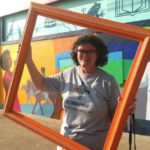 This Act Locally Waco blog post is by Ashley Bean Thornton, the Manager of the www.www.actlocallywaco.org website and the editor of the Friday Update newsletter. The Act Locally Waco blog publishes posts with a connection to these aspirations for Waco. If you are interested in writing for the Act Locally Waco Blog, please email [email protected] for more information.
This Act Locally Waco blog post is by Ashley Bean Thornton, the Manager of the www.www.actlocallywaco.org website and the editor of the Friday Update newsletter. The Act Locally Waco blog publishes posts with a connection to these aspirations for Waco. If you are interested in writing for the Act Locally Waco Blog, please email [email protected] for more information.
by Ryn Farmer, Community Organizer, Waco Community Development Corporation (Waco CDC)
I have really been soul-searching over the last few years about what it means to be culturally competent. It is a term widely used in the social work field and has also gained a lot of traction in the medical field over the past few decades. I think it is something we need to really think about because we all come from such different experiences and ways of living. The idea behind “cultural competency” stems from the desire to respond respectfully across cultures and provide sensitive, holistic care to clients. It is about educating ourselves, before we meet people, about their culture so that we can respond thoughtfully and effectively. All of that sounds great, right? But for some reason this phrase has never really resonated with me.
Before I talk more about cultural competency, I want to make sure we are defining culture the same way. So as a basis for my thoughts, I’m defining culture as our traditions, norms, customs and beliefs in relation to gender, age, race, sexual orientation, socio-economic status, religion, language, etc. We operate from our core beliefs – both the internal and external elements that influence our life – and that affects (but does not determine) the way we think, how we behave and what we believe.
The phrase “cultural competency” indicates to me that we can arrive at something, that there is an ending point. That seems rather presumptuous because I know I could never be fully culturally competent. Of course, the philosophical underpinnings of cultural competency are good and desirable, and it is definitely a starting point. Many individuals won’t even begin a conversation about race, gender, sexual orientation, etc., because they are afraid they will say the wrong thing or because they have no idea what to say at all. We keep quiet because we are afraid of offending, or we decide to speak up and sound like a blundering idiot. So what is the answer? Don’t say anything at all and keep living in a world where deep injustice exists and too afraid to do anything? Speak from our limited knowledge and interactions with people and end up saying something foolish? Maybe there is another way… What if we approached culture in a slightly different manner? What if, instead of guiding our approach with the notion of “competence,” we approached with humility?
The idea of cultural humility is much more meaningful to me than cultural competency. In cultural humility, I can come from a place of learning rather than of expertise… a place of openness and of asking questions to better understand where someone is coming from, rather than assuming I already know them.
Dr. Melanie Tervalon and Jann Murray-Garcia have produced significant and meaningful information about cultural humility and describe it as a “life-long process of self-reflection and self-critique.” Self-awareness and reflection are the main ideas behind it, but there are other factors that come to play as well. It also involves recognizing and seeking to change power imbalances that exist in our communities and developing institutional accountability so that as institutions we are responding sensitively to the needs of people. For me, the notion of cultural humility takes away the idea that each culture has a set of rules that everyone follows. I think if we hold to the cultural competency way of thinking, then our interactions with people are limited to what we think are the beliefs and ways of living that exist in their “rulebook”.
I was at a meeting recently and one of the women at my table started speaking about how she wished we would quit viewing each other as objects and commodities but rather view each other as people. She talked about how we need to focus more on building relationships with each other first rather than focusing on yet another task to get done. We often assume we know each other because we run in similar circles or go to multiple meetings with the same people. But we don’t. We have only scratched the surface. So my friend was saying we need to take time to actually know each other. At the end of the meeting, my friend who said she didn’t want to be an object anymore was asked to lead a group. The person asking her said, “Because we need some color on our leadership team. And you’ve got color!” [Insert deep sigh of frustration and anger]. We have so far to go in being sensitive, in stopping to think about what we say before we say it and in truly looking at someone as a person. We must ask questions to really understand who someone is and not assume we know them because we have one gay friend, or one African American friend, or one Jewish friend.
If we really want to understand each other and start collaborating more together, we cannot paint a picture of any culture with a broad stroke of our brush. To do so would be foolish and circumscribed. So rather than viewing the individuals in our life as a token-something-or-other, why not actually view them as people? View them as someone with strengths to be discovered, and value them for what they can bring to the proverbial ‘table’ of life. Ask meaningful and engaging questions while coming from a place of appropriate inquisitiveness and openness. And before we do any of that, let’s start by seeking to discover our own beliefs and assumptions, and challenging ourselves in the idea that our values should be held above others.
We need to come from a place of learning. Of humility. And we need to never feel like we have arrived. Because when we believe we understand an individual because we think we understand their culture, we lose sight of the uniqueness of who they are and the gifts they can offer. Of course, there has to be grace and patience wrapped up in this whole process. I am so incredibly thankful for all of my friends who have poured out both of those things on me over the years as I struggle to better understand them. But I hope that if I, and others, come from a place of listening, of love, of reflection and of acceptance, we can accomplish a great deal more living in community together in this messy, beautiful and diverse world.
If you are interested in learning more about cultural humility, you can watch this 30 minute documentary produced by Vivian Chavez, an Associate Professor at San Francisco State. Also, my friend Jody Fernando has compiled incredibly thoughtful reflections from her blog Between Worlds into a book called Pondering Privilege: Toward a deeper understanding of whiteness, race, and faith.
 This Week’s Act Locally Waco Blog post is by Ryn Farmer. Ryn is a Community Organizer at the Waco Community Development Corporation (Waco CDC). Waco CDC helps to inspire and cultivate healthy neighborhoods. They consider a healthy neighborhood to be one that is safe, clean, and diverse; one in which it makes economic sense for people to invest and one where neighbors manage change successfully. If you would be interested in writing for the Act Locally Waco blog, please send an email expressing your interest to [email protected].
This Week’s Act Locally Waco Blog post is by Ryn Farmer. Ryn is a Community Organizer at the Waco Community Development Corporation (Waco CDC). Waco CDC helps to inspire and cultivate healthy neighborhoods. They consider a healthy neighborhood to be one that is safe, clean, and diverse; one in which it makes economic sense for people to invest and one where neighbors manage change successfully. If you would be interested in writing for the Act Locally Waco blog, please send an email expressing your interest to [email protected].
by Phil York, Act Locally Waco Housing and Homelessness Policy blogger
“It is simply unacceptable for individuals, children, families and our nation’s Veterans to be faced with homelessness in this country” – President Obama, June 18, 2009.
Who is your favorite superhero?
It seems like the silver screen is flush with superhero smash hits every summer. Batman, with his man cave and great car, is my second favorite superhero. But before I was acquainted with Warner Brothers and Marvel Comics, my first favorite superhero was (and continues to be) my Father. Like all other superheroes, my Dad wore a superhero suit (his uniform), and in my eyes, saved the world each day during his career in the United States Navy.
In my previous posts we have discussed the broad implications of homelessness and how homelessness affects our community, our economy and our youth. Today we will unwrap a basic understanding of homelessness among Veterans: Our American Heroes.
National Policy
The Obama Administration publically calls housing a basic human right. The flagship federal agency for housing initiatives, policy, and public funding related to housing is Housing and Urban Development (HUD). Under the leadership of Secretary Shaun Donovan, HUD and many other agencies partner so we can do more about homelessness through a holistic approach. That collaborative group is called The United States Interagency Council on Homelessness (USICH). It is an independent agency comprised of 19 Cabinet Secretaries and agency heads that coordinate responses to homelessness. HUD, USDA, Department of Veteran Affairs, Social Security Administration, and Department of Homeland Security are just a few of the partner agencies involved.
This interagency collaboration is mandated by The Hearth Act (signed into law by President Obama May 2009). President Obama’s Opening Doors Plan (drafted in 2010), is the United States’ first comprehensive strategy to prevent and end homelessness. The Plan is focused on four key goals: (1) Finish the job of ending chronic homelessness in five years; (2) Prevent and end homelessness among Veterans in five years; (3) Prevent and end homelessness for families, youth, and children in ten years; and (4) Set a path to ending all types of homelessness. USICH uses this plan to guide program implementation.
How are we doing?
Here is a timeline of the progress that has been reported regarding homeless Veterans:
2009 – According to President Obama’s plan document (p. 20), in 2009, the VA estimated 107,000 homeless Veterans on any given night.
2010 – According to Green Doors, a central Texas nonprofit corporation and a Veteran advocacy group, the Department of Veteran Affairs (VA) estimated that on any given night there were 76,000 homeless veterans sleeping on American streets.
2011 – On December 13, 2011, HUD released the 2011 Point-In-Time Count Report that showed there were 67,495 homeless veterans in the United States (including sheltered and unsheltered). Among those reported were 1,500 in Texas, and 40 in Waco/McLennan County.
2012 – According to Housing and Urban Development’s Point-in-Time Survey, January 2012, 62,619 veterans were homeless on a single night in January 2012. Texas had by far the largest number of homeless veterans among statewide counts with 1,481 homeless veterans on a single night.
2013 – HUD’s “2013 Continuum of Care Homeless Assistance Programs Homeless Populations and Subpopulations Report” states the count of homeless veterans (sheltered and unsheltered) as 58,063. According to a blog post by Secretary Donovan on December 2013, “The numbers since 2010 when Opening Doors was created are encouraging… homelessness among Veterans fell an incredible 24 percent.” He credits this improvement to the strong working partnership between HUD and Veterans’ Affairs and to a commitment to learning from evidence-based research.
A lot left to Un-Wrap
The most common metric in homelessness policy is the Point-In-Time Count. Most communities conduct a Point-In-Time count once a year, usually in January. It counts people who are unsheltered or in emergency shelters or transitional housing. Families, youth, and other individuals who are doubled up are not included. The Point-in-Time Count may be the best we can do as far as measuring homelessness, but it is far from perfect.
When I served as a Point-In-Time surveyor in Brazos County, “are you a Veteran?” was a question on the verbal survey. There are several important things to consider about that question:
- The survey itself is voluntary
- This specific question is a voluntary, self-selected answer
- Depending on its place in the survey order, it may not be asked before the participant elects to end the conversation
- The participant needs to trust the surveyor; without trust little information can be collected.
Given the flaws of the Point-In-Time Survey that several of our sources identify, I am reluctant to share HUD’s rosy estimate of the progress that has been made. I agree that the data from multiple sources supports the conclusion that we have made at least some steps in the right direction; the question remains of how large those steps have been.
I say that not to be pessimistic about our progress, but to make sure we complete the race before we celebrate its end. If data points are used to judge success or failure of our agencies we need to know as informed citizens the nature of that data. The data collection challenge is a reoccurring theme across all topics and demographics of homelessness. It is worth describing in each blog as it affects each group uniquely.
One uniform opinion across data sources is that the true number of homeless veterans is more than likely higher than the estimate. Much work remains to be accomplished with this important population. Considering their sacrifice, our Veterans and their families remain our heroes long after they retire their uniforms. I look forward to our next discussion about this important topic.
 Phil York, Director of Development at Waco Habitat for Humanity, is a self-described “policy nerd;” he is also the Act Locally Waco housing and homelessness policy blogger. You can direct questions to Phil to [email protected]. Would you be interested in blogging for Act Locally Waco? If so please email [email protected].
Phil York, Director of Development at Waco Habitat for Humanity, is a self-described “policy nerd;” he is also the Act Locally Waco housing and homelessness policy blogger. You can direct questions to Phil to [email protected]. Would you be interested in blogging for Act Locally Waco? If so please email [email protected].
by Felix Landry
Since I moved to Waco and began working as a city planner, Waco’s poverty has been the topic of discussion I run into most. I hear it at work, church, in local magazines, the newspaper, the radio, from our city leaders, and even at social events. Most Wacoans I know seem to agree that our level of poverty is a huge concern and detriment to our civic health.
Poverty varies across cultures, climates, and geography; it also exhibits consistent elements that are identifiable the world over. Food and shelter come to mind immediately for most people… transportation? It doesn’t come up as often – but it should.
 The vast majority of urban transportation networks in the US are designed to move as many cars as possible at safe speeds. This approach caters to vehicles more than to people, which has resulted in at least two major problems cities are facing today.
The vast majority of urban transportation networks in the US are designed to move as many cars as possible at safe speeds. This approach caters to vehicles more than to people, which has resulted in at least two major problems cities are facing today.
First, many places in the US have no additional space in their public right of ways (ROW) to increase the number of travel lanes for vehicles. Even if additional space were available for purchase (at incredible cost), the funds available for new road construction decrease every year due to the rising cost of maintaining our existing transportation network.
Second, and closer to home, many people cannot afford to purchase or operate a car. AAA has released an annual report, “Your Driving Costs,” every year since 1950 that analyzes the cost of owning a vehicle in the US. According to the 2013 report, the average annual expense for owning and operating a small sedan (think Chevy Cruze or Ford Focus) in 2013 and driving it 10,000 miles was $5,952. That is the cost to pay for insurance, fuel, maintenance and other operating expenses – purchasing the car is an additional cost. According to the Census, 23% of families (31% of individuals) in Waco live below the poverty line. A family of four living below the poverty line has an annual income of $23,050 or less. In other words, that family, in a vehicle-based transportation system, will be using more than a fourth of their small income just to get to work, take the kids to school, and go to the grocery store.
When people come together as town or city, they create an opportunity to pool resources for common infrastructure (i.e. water and sewer lines) and services (i.e. fire and police protection) at a lower overall cost. We readily agree that every citizen has an equal right to such services, regardless of income. However, our existing transportation network does not always provide the same level of service regardless of income. Most transportation systems in the US cater primarily to the most expensive (and dangerous) form of transportation: personal vehicles.
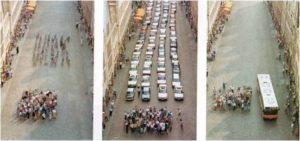 Many sections of the transportation network in the US could carry more people if they were re-designed for multiple forms of transportation instead of just for vehicles. The photo on the left illustrates this principle well. It shows the same 60 people along with the number of bikes, cars, or buses it would take to carry them. The drawing on the right illustrates how a network designed to move people rather than vehicles facilitates a higher traffic volume without expanding the right of way. Such a
Many sections of the transportation network in the US could carry more people if they were re-designed for multiple forms of transportation instead of just for vehicles. The photo on the left illustrates this principle well. It shows the same 60 people along with the number of bikes, cars, or buses it would take to carry them. The drawing on the right illustrates how a network designed to move people rather than vehicles facilitates a higher traffic volume without expanding the right of way. Such a  design is more efficient and effective: Dedicated space for pedestrians and cyclists, and shared space for vehicles and buses can move more people than the same amount of space designed strictly for personal vehicles. It also decreases the amount of public funding needed for construction and maintenance and generates a transportation network viable for all income levels.
design is more efficient and effective: Dedicated space for pedestrians and cyclists, and shared space for vehicles and buses can move more people than the same amount of space designed strictly for personal vehicles. It also decreases the amount of public funding needed for construction and maintenance and generates a transportation network viable for all income levels.
Improving and diversifying our transportation network would alleviate some of the burdens that keep people impoverished. Not only would it provide greater economic potential for low income earners, but it would also increase Waco’s appeal to businesses and new residents. It’s no coincidence that attractive places to live in and visit around the world often have a viable public transit system and walkable streets.
 Felix Landry is the senior planner and bicycle and pedestrian coordinator for the City of Waco. He and his wife moved here in 2010 from College Station, Texas. They have two young boys.
Felix Landry is the senior planner and bicycle and pedestrian coordinator for the City of Waco. He and his wife moved here in 2010 from College Station, Texas. They have two young boys.
By Alexis Christensen
What happens when we become disillusioned with the work at hand? With the community we’ve cried for, lived in, believed in? How do we keep the picture of the beloved community from being stripped from our minds and hearts? What happens when hope seems like a far off dream?
As a community organizer, I stare straight into the eyes of these types of questions each day. Whether in the eyes of the people I work with or in the mirror reflecting my own hopelessness. I have seen tears, desperation, confusion, anger and angst in many people. Systems can feel too big, too difficult to maneuver and change, so how do we keep going? How do we live in a world with such great challenges?
For me, it is hope.
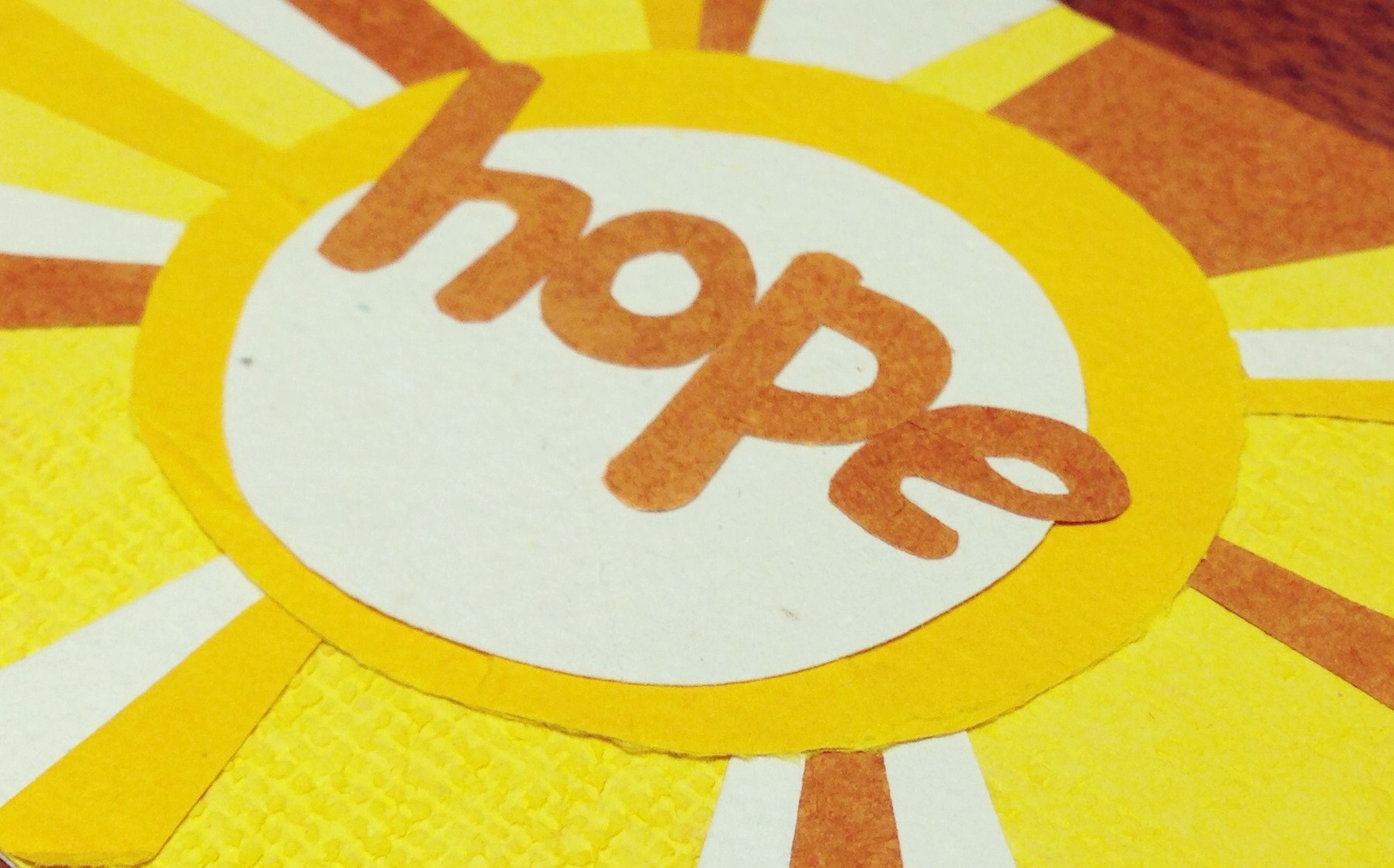 The Merriam-Webster definition of hope is “to expect with confidence.” I heard a sermon once where the pastor described hope as the confident expectation of good. I like that. When we face the difficulties of life and work in community, we cling to hope.
The Merriam-Webster definition of hope is “to expect with confidence.” I heard a sermon once where the pastor described hope as the confident expectation of good. I like that. When we face the difficulties of life and work in community, we cling to hope.
But the hope I’m talking about is more. This hope is a verb—it’s action. It’s seeing the endless challenges in life and saying yes again and again to the fight against injustice. It’s about my friends in the neighborhood who are often discounted, underutilized, and disrespected but still advocating for change together. It’s about showing up, speaking out, and holding fast. Hope is an element of good community organizing. In the process of listening, identifying leaders and topics of concerns, and gathering people together based on their self-interest, a thread of hope must be present if the effort is to be carried out effectively.
Hope motivates, inspires, and creates an environment of empowerment. I have seen parents lead initiatives in their schools, support their children and speak to power because of hope. I have seen churches and church members realize their capacity to impact their communities through their gifts and talents. I have seen neighborhood residents gather to create imaginative plans for change. The list is endless but the thread is the same, hope.
Hope follows me wherever I go when I remember that it is alive. At my office, in my car, on the streets, in the schools, it lingers. Author Barbara Kingsolver sums up this kind of hope in her book Animal Dreams: “Here’s what I’ve decided: the very least you can do in your life is figure out what you hope for. And the most you can do is live inside that hope. Not admire it from a distance but live right in it, under its roof.”
So, Waco, let’s settle down and live under hope’s roof. And while we’re there, let’s turn that hope into action for transformation in our communities.
 This week’s Act Locally Waco blog post was written by Alexis Christensen, a Community Organizer at Waco Community Development Corporation (Waco CDC). Would you be interested in writing for the Act Locally Waco blog? If so, contact [email protected].
This week’s Act Locally Waco blog post was written by Alexis Christensen, a Community Organizer at Waco Community Development Corporation (Waco CDC). Would you be interested in writing for the Act Locally Waco blog? If so, contact [email protected].
by Caleb Reynolds, Baylor Student
“Did the faculty tell y’all not to talk to us?” are words that I will never forget.
When a homeless man named Cody asked if my “Christian” college told its students to avoid the poor I nearly broke down. Meeting this man opened my blind eyes. I saw a reality that I had not seen before, a reality where even though a person’s potential may be astoundingly high, he can be shut down because of his economic or social standing. I never would have seen this reality if it were not for a simple assignment in my English class. Our professor asked us to take a bus ride on Waco Transit to see what the surrounding community is like. Just a few streets over from my university I met a man who had a profound effect on me; he gave me a new perspective.
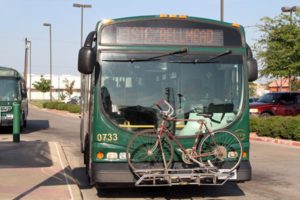 Cody is the type of man that would have been all too easy to pass by as I went to get snacks at the gas station across the street. As soon as I sat down to wait for the bus, he began to speak. He didn’t ask for money; he didn’t ask for food; he asked how I was. A common courtesy led to a deep conversation about both of us. Cody revealed his life to me. He was imprisoned until five years ago and started his path towards a better place three years ago. His reason to really change his life was the birth of his son. Because of his own experience growing up without a father, Cody was determined that history not repeat itself with his son. He explained his whole reason to try and be a better man stemmed from his relationship with Christ. Through Christ he was trying to fix his life, something he admitted was a struggle. He was dependent on his faith in God, and trying his best not to let worry in.
Cody is the type of man that would have been all too easy to pass by as I went to get snacks at the gas station across the street. As soon as I sat down to wait for the bus, he began to speak. He didn’t ask for money; he didn’t ask for food; he asked how I was. A common courtesy led to a deep conversation about both of us. Cody revealed his life to me. He was imprisoned until five years ago and started his path towards a better place three years ago. His reason to really change his life was the birth of his son. Because of his own experience growing up without a father, Cody was determined that history not repeat itself with his son. He explained his whole reason to try and be a better man stemmed from his relationship with Christ. Through Christ he was trying to fix his life, something he admitted was a struggle. He was dependent on his faith in God, and trying his best not to let worry in.
He said that he did not know much about Baylor other than that the students do not approach him. He said that he could tell from the second I began to talk with him that I had Christ in me. That is where his words hit me in the gut. This struggling child of God planted a question in me: Who was I and what was I doing?
I now find myself contacting Mission Waco, eager to see how I can help Cody and others like him. I find myself looking for time to help out those who are needier than I am. I see myself questioning things that I thought were set in stone. I used to look at my surroundings and say that Baylor was a bubble, but the real problem was that I was not looking closely enough. With a closer look, I realize I can see homeless people from my window. It is easier to walk to worship with the homeless people gathered on Sundays at the Church under the Bridge than to any of my classes.
After talking with Cody, I realize, whether I want to admit it or not, my bubble includes people in need. My bubble does include Baylor, a school that I love because of the Christian values we have in common. Meeting Cody, however, made me question whether I really stood for these values, or whether I just “talked the talk” because it helped me fit in. He made me realize that these values have implications on my life. I cannot just be the stereotypical college student. I can’t just ignore a suffering person; that person is a suffering child of God. Cody made me see that claiming to be a Christian and claiming to be going into full time vocational Ministry doesn’t make me what I say. The only way those things can be true is if I live them. I can claim that I am a fan of something, but if I never talked about it or identified myself with it, who would know what I cheered for?
On the surface it may look like my life is not too different than before I met Cody. I’m still at Baylor. I still live in Penland, and I still plan to major in communications. But my life has changed. Since meeting Cody I care for the people that are part of the city. I now care that this man is jobless and homeless, instead of just letting him pass through my life. I am a typical Baylor student that, because of a random project, talked to a random man, and now I am changed. This assignment had an effect on me, and for the better. It gave me a new outlook on my life. An outlook that now involves others.
 This week’s Act Locally Waco blog post is by Caleb Reynolds. Caleb is a freshman communications major from Carrollton, Texas. He met Cody as part of an assignment in his “Writing in the Age of Digital Media” class ,fall 2013, at Baylor University. If you are interested in writing for the Act Locally Waco blog, please contact Ashley Thornton at [email protected].
This week’s Act Locally Waco blog post is by Caleb Reynolds. Caleb is a freshman communications major from Carrollton, Texas. He met Cody as part of an assignment in his “Writing in the Age of Digital Media” class ,fall 2013, at Baylor University. If you are interested in writing for the Act Locally Waco blog, please contact Ashley Thornton at [email protected].
By Ashley Bean Thornton
Like many White, middle-class Americans, I grew up understanding life as a competition, a footrace. The ones who run the fastest, and by that I mean work the hardest, win the prizes. I knew good, hardworking people – my parents for example – who were winning, and I expected to be a good, hardworking person who would also win. In fact, that is exactly how it has played out so far.
Of course… to feel good about winning, you have to believe the race is fair.
I don’t remember having “Black History Month” when I was in school, but we definitely studied slavery and the Civil War. We saw slides of the Little Rock Nine being escorted to class by the National Guard, and of White people turning dogs and fire hoses on Black people. We learned about Rosa Parks taking her seat on the bus in Montgomery, and we learned about Martin Luther King, Jr. and the “I have a Dream” speech.
Without even thinking about it, I interpreted all of this through my footrace metaphor, like so: (1) Slavery was an unthinkably horrible sin. (2) Even after slavery ended, the race was not fair. White people cheated – a lot. (3) Thanks to Dr. King, and the heroes of the Civil Rights Movement, Black people were able to use the legal system to make the race fair. Conclusion: Things were terrible before, but they are OK now; we can quit worrying so much about the Black/White thing, and just concentrate on running as fast as we can.
I was fairly comfortable with this conclusion for a long time.
Recently I came across a 2013 Pew Research Center Report partially titled “King’s Dream Remains an Elusive Goal.” According to this report, Black Americans are nearly three times as likely as White Americans to have incomes below the poverty guideline. The median net worth (wealth) for White households is more than ten times that of Black households, and Black men are six times as likely to be incarcerated as White men. With these facts in mind, I have to ask myself an uncomfortable question: if the race is fair, why do we continue to see such huge disparities?
It seems blindingly obvious now, but it took me a long time to realize that if I wanted to begin to untangle the knot of reasons behind these differences I needed to tweak my footrace metaphor. In my mind the race for success had always been an individual event. If I win it is because of my hard work; if I lose it’s because I should have worked harder. If you lose…well … you get the picture. I still believe this is the truth; it’s just not the whole truth. Hard work matters, but it’s also important to realize that the race is not, and never has been, an individual event. It’s a relay.
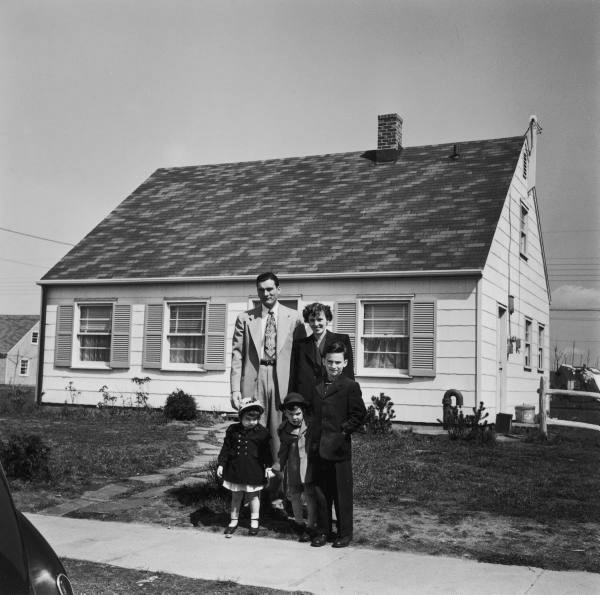 Let’s say, for example, my White grandparents saved their money and bought a house in the suburbs back in the 40’s. That house increased in value and became part of the nest egg my parents used to get an even nicer house in an even better neighborhood. That meant I got to go to a really good high school, and from there to a good university, and from there to a good job. Meanwhile Black grandparents in the 40’s didn’t get to buy that house in the suburbs because of prejudicial deed restrictions (not to mention inhospitable neighbors). To make matters worse, no (White owned) bank would loan them the money to build a nice house in a Black neighborhood because it was “too high risk.” That meant no nest egg, no nicer house for their kids, and a not so great high school in a declining neighborhood for their grandkids – my peers. Multiply this scenario by thousands of Black and White grandparents and you begin to see one reason why there is such a huge disparity in wealth between Black and White households today.
Let’s say, for example, my White grandparents saved their money and bought a house in the suburbs back in the 40’s. That house increased in value and became part of the nest egg my parents used to get an even nicer house in an even better neighborhood. That meant I got to go to a really good high school, and from there to a good university, and from there to a good job. Meanwhile Black grandparents in the 40’s didn’t get to buy that house in the suburbs because of prejudicial deed restrictions (not to mention inhospitable neighbors). To make matters worse, no (White owned) bank would loan them the money to build a nice house in a Black neighborhood because it was “too high risk.” That meant no nest egg, no nicer house for their kids, and a not so great high school in a declining neighborhood for their grandkids – my peers. Multiply this scenario by thousands of Black and White grandparents and you begin to see one reason why there is such a huge disparity in wealth between Black and White households today.
Even if the leg of the relay I’m running now is reasonably fair (or at least fair-er), the previous legs of the race were seriously rigged in favor of White people. I was way, way ahead before I ever started to run.
I do not know exactly what we should do to even out the disparities that have come about as a result of the inequities of the past. Should we invest more in public schools? In rebuilding high poverty neighborhoods? Should we provide more support to Black-owned businesses? Should we take a hard look at our legal system? Maybe we should do all of these things; maybe none of them; maybe there are other creative solutions I can’t even imagine. I don’t know. I just know that there is a limit to how much time even a great athlete can make up in the last lap of a relay. If we care about reducing the Black/White disparities described above any time soon, we are going to have to do something more than just telling people to “run as fast as you can.”
 This week’s Act Locally Waco blog post is by Ashley Bean Thornton, the Manager of the www.www.actlocallywaco.org website and the editor of the Friday Update newsletter. The Act Locally Waco blog publishes posts with a connection to these aspirations for Waco. If you are interested in writing for the Act Locally Waco Blog, please email [email protected] for more information.
This week’s Act Locally Waco blog post is by Ashley Bean Thornton, the Manager of the www.www.actlocallywaco.org website and the editor of the Friday Update newsletter. The Act Locally Waco blog publishes posts with a connection to these aspirations for Waco. If you are interested in writing for the Act Locally Waco Blog, please email [email protected] for more information.
By Kelsey Scherer
A couple months ago, I was driving through Austin on the way to a conference for work. I glanced at an overpass to see these words scrawled across the concrete wall:
“Collaboration is currency”
The phrase stunned me with its elegant simplicity.
Encouraging community collaboration, dialogue, and connection is a huge part of what I do as a Child Hunger Outreach Specialist at Texas Hunger Initiative’s Waco office. Still, I regularly struggle to clearly outline the role and value of collaboration in the work I do. I came into this position with well-intentioned ideas about the importance of collaboration, and yet have struggled to pursue earnest, engaged collaboration as much as I had hoped.
As I strain toward being a part of the renewal of this beautiful city with all of its untapped potential, perhaps it’s easier to begin with an honest reminder of what is not currency.
My privilege is not currency. My whiteness is not currency. My femininity is not currency. These are things which I admit, however uncomfortably, that I have used to my advantage for social or professional gain at various points in my journey. But collaboration – collaboration is a different story, and an entirely different currency, because it doesn’t belong to me. I can’t own it, steal it, or borrow it. Collaboration is currency which may be freely used, exchanged, and debated by all – which the reduced and exclusive currencies of culturally normative gender, race, wealth, or health status cannot. Regardless of my background and experience, genuine collaboration insists that my voice is not the one that matters, and that collectively we can achieve, learn, grow, and heal more together than we can apart.
While collaboration may seem like a sexy term – and we may be tempted to extol its virtues and slip it into conversation to further our agendas – collaboration lived out is anything but sexy. It’s messy, confusing, and hard to define. As soon as we find ourselves patting each other on the back for “collaboration well done,” we find another voice that has been excluded, another empty chair that should have been filled and pulled up to the table. Collaboration forces me to come to terms with what I lack. It reminds me that I do not know my neighbor, and if I don’t know my neighbor, I cannot possibly love my neighbor well.
 Using collaboration as currency starts to chip away at the uneven playing field to which we arrive each day – a field which benefits me unfairly, to the detriment of others. Collaboration, however amorphous and hard to define, holds great promise for restoring dignity and humanity to people whose unique voices have been silenced for too long. Collaboration rightly understood is the only way out of the predicament in which we find ourselves. Trapped by isms, by poverty, by hunger, by finger-pointing and poor-blaming, collaboration is like a first awe-inspiring glance into the Grand Canyon. We may be impressed by its beauty and potential, but none of us are so foolish as to think it can be conquered or wrested away for our own purposes.
Using collaboration as currency starts to chip away at the uneven playing field to which we arrive each day – a field which benefits me unfairly, to the detriment of others. Collaboration, however amorphous and hard to define, holds great promise for restoring dignity and humanity to people whose unique voices have been silenced for too long. Collaboration rightly understood is the only way out of the predicament in which we find ourselves. Trapped by isms, by poverty, by hunger, by finger-pointing and poor-blaming, collaboration is like a first awe-inspiring glance into the Grand Canyon. We may be impressed by its beauty and potential, but none of us are so foolish as to think it can be conquered or wrested away for our own purposes.
 Kelsey Scherer joins the Act Locally Waco team to blog about Food Security and related issues. She is a Child Hunger Outreach Specialist at Texas Hunger Initiative’s Waco Regional Office. Kelsey is also a team member for the CHAMPS grant. The CHAMPS project aims to equip city leaders, anti-hunger groups, and the broader community to more effectively combat child hunger with the help of summer and afterschool meal programs.
Kelsey Scherer joins the Act Locally Waco team to blog about Food Security and related issues. She is a Child Hunger Outreach Specialist at Texas Hunger Initiative’s Waco Regional Office. Kelsey is also a team member for the CHAMPS grant. The CHAMPS project aims to equip city leaders, anti-hunger groups, and the broader community to more effectively combat child hunger with the help of summer and afterschool meal programs.
